 BSA Troop 134
BSA Troop 134
Los Angeles, Pacifica Council
Palos Verdes California

|
|
|
Table of ContentsPurpose of Board of ReviewTaken from Orange County Scout District
Purpose of a Board of Review:The members of a Board of Review should have the following objectives in mind:
Additionally, the Board of Review provides "quality control" on advancement within the unit, it provides an opportunity for the Scout to develop and practice those skills needed in a interview situation, and it is an opportunity for the Scout to review his accomplishments. The Board of Review is NOT a retest; the Scout has already been tested on the skills and activities required for the rank. However, the chairman of the Board of Review should ensure that all the requirements have been "signed off" in the Scout's handbook. Additionally, the chairman should ensure that leadership and merit badge records are consistent with the requirements for the rank. The Board of Review is an opportunity to review of the Scout's attitudes, accomplishments and his acceptance of Scouting's ideals.
Composition of a Board of Review:For all ranks (except Eagle) and Eagle palms, the Board of Review consists of three to six members of the Troop Committee. The Troop Advancement Chairperson typically acts as the chairperson of the Board of Review. Relatives or guardians may not serve as members of a Scout's Board of Review. Unit leaders (Scoutmaster, Assistant Scoutmasters, Varsity Coach, Post Advisor, etc.) should not participate in a Board of Review unless absolutely necessary. For the rank of Eagle, the Board of Review consists of three to six members drawn from Scouting and the community. The members of the Board of Review are selected by the District Advancement Committee; at least one member of the District Advancement Committee must be a member of the Board of Review for Eagle, and serves as chairperson of the Board of Review. Unit leaders from the Scout's unit, relatives, or guardians may not serve as members of a Scout's Board of Review for Eagle. A Board of Review for Eagle may contain members of the community who are not registered Scouters; however, they should be knowledgeable of the principles of Scouting. For example, a representative from a chartering organization, an adult Eagle Scout (even if not currently registered), or a religious leader are frequently asked to assist with an Eagle Board of Review. The Scout may request an individual to be a member of his Board of Review. As a general rule, no more than one member of an Eagle Board should be associated with the Scout's unit.
Mechanics of a Board of Review:The Scout is introduced to the board by the Chairperson of the board. The Scout should be in full uniform (local or unit custom may dictate regarding neckerchief and badge sash). The chairman of the Board of Review should ask the Scout to come to attention, and recite one or more of the following:
For the lower ranks, one or two (usually the Law and Oath) should be sufficient. For higher ranks, more may be expected. One or two re-tries are appropriate, especially for younger Scouts, or if the Scout appears nervous. The board members are invited to ask questions of the Scout (see the sections appropriate to each rank). The questions should be open-ended, offering an opportunity for the Scout to speak about his opinions, experiences, activities, and accomplishments. Avoid questions which only require a simple one or two word answer. If an answers is too brief, follow up with a, "Why?" or, "How can that be done?" to expand the answer. The questions need not be restricted to Scouting topics; questions regarding home, church, school, work, athletics, etc. are all appropriate. The Chairperson should be made aware of any "out-of-bounds" areas; these should be communicated to the board before the Board of Review begins (e.g., if a Scout is experiencing family difficulties due to a divorce, it would be prudent to avoid family issues.) The time for a Board of Review should be from 15 to 30 minutes, with the shorter time for the lower ranks. When all members have had an opportunity to ask their questions, the Scout is excused from the room. The board members then consider whether the Scout is ready for the next rank; the board's decision must be unanimous. Once the decision is made, the Scout is invited back into the room, and the Chairperson informs the Scout of the board's decision. If the Scout is approved for the next rank, there are general congratulations and hand shakes all around, and the Scout is encouraged to continue advancing. If there are issues which prevent the Scout from advancing to the next rank, the board must detail the precise nature of the deficiencies. The Scout must be told specifically what must be done in order to be successful at the next Board of Review. Typically, an agreement is reached as to when the Scout may return for his subsequent Board of Review. The Chairperson must send a written follow up, to both the Scout and the Scoutmaster, regarding the deficiencies and the course of action needed to correct them.
Mechanics of a Board of Review for Eagle RankThe mechanics of a Board of Review for Eagle are similar to all other Boards of Review, except that a Board of Review for Eagle is more in depth, and might last as long as 45 minutes to an hour. Additionally, the Eagle Scout Rank Application, Letters of Recommendation (minimum of 3) and Eagle Project Notebook must be present and reviewed by the board. Questions about these documents are appropriate, but the letters of recommendation are for the board's use only; any comments or questions about them should not reveal who wrote the letters. The letters are retained by the District Advancement Chairperson, and are never given to the Scout. After the application has been approved by National Eagle Board of Review and returned to the local council (typically 4-6 weeks), the letters of recommendation are destroyed.
The Nature of the Questions:On the following pages are typical Board of Review questions for each rank. The questions for the lower ranks are simpler and generally deal with factual information about the Scout's participation in his unit, and his approach to applying the skills he has learned toward earning the next rank. The questions for the higher ranks are less factual, and generally seek to aid understanding of how Scouting is becoming an integral part of the Scout's life. Remember: it is not the point of a Board of Review to retest the Scout. However, questions like, "Where did you learn about ..." or "Why do you think it is important for a [rank] Scout to have this skill?" are valid. If a Scout appears nervous or anxious about the Board of Review, it might be appropriate to ask one or two questions from the list for a lower rank, to help "break the ice" and establish some rapport. In general, within a rank, the questions are arranged from "easiest" to "most difficult". For each rank, there is a question about advancing to the next rank. The purpose of this question is to encourage advancement, but it should not be asked in a way that pressures the Scout. [Note: If the Board of Review is for the Life rank, and the Scout is at or near his 17th birthday, some pressure towards Eagle may be in order. At the very least, be certain that the Scout realizes that his time is running out.] For higher ranks, there is a question from The Boy Scout Handbook about basic Scouting history. For Order of the Arrow members, there are questions about the role of OA within Scouting. More questions are provided than can typically be accommodated in the time suggested. The Board of Review will need to select the questions which are appropriate for the particular Scout and his experiences. These questions are intended to only serve as a guide. Units should freely add to, or remove from, these lists as they feel appropriate.
What Every Scout Should KnowScout Oath:On my honor I will do my best Scout Law:As Scout is ... Trustworthy, Loyal, Helpful, Friendly, Courteous, Kind, Obedient, Cheerful, Thrifty, Brave, Clean, Reverent. Scout Motto:Be Prepared. Scout Slogan:Do a good turn daily. Outdoor Code:As an American, I will do my best to --
Tenderfoot Rank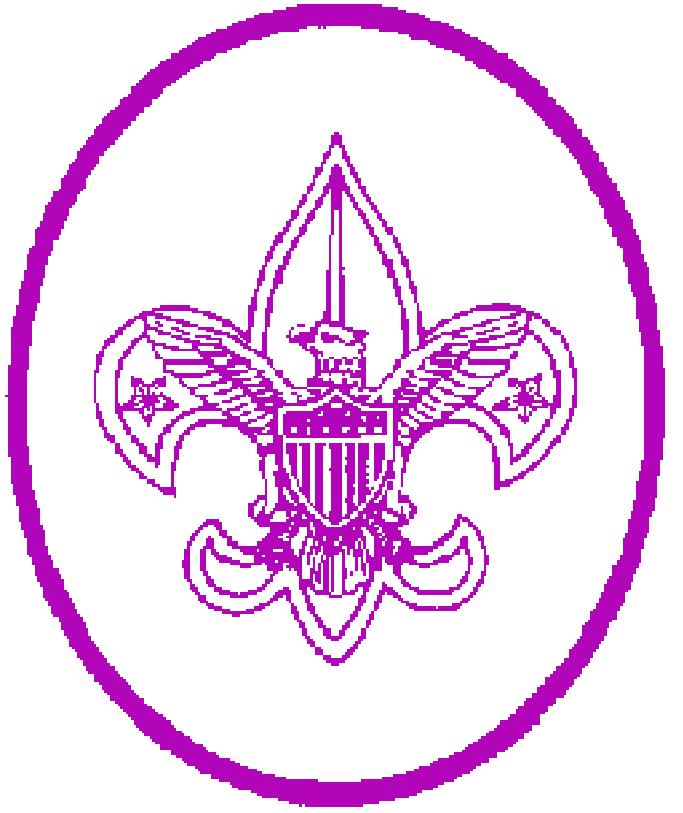
This is the Scout's first experience with a Board of Review. The process may require some explanation on the part of the Board of Review Chairperson. The first few questions in the Board of Review should be simple. The Board of Review should try to gain a sense of how the Scout is fitting in to the Troop, and the Scout's level of enjoyment of the Troop and Patrol activities. Encourage advancement to 2nd Class. Point out that the Scout may have already completed many of the requirements for 2nd Class. The approximate time for this
Board of Review should be 15-20 minutes. Sample Questions:
2nd Class Rank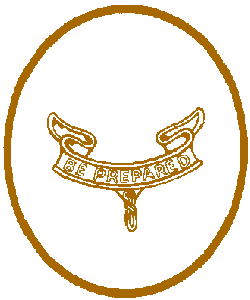
This is the Scout's second Board of Review. The process should be familiar, unless it has been some time since the Board of Review for Tenderfoot. Questions should focus on the use of the Scout skills learned for this rank, without retesting these skills. The Board of Review should try to perceive how the Scout's patrol is functioning, and how this Scout is functioning within his patrol. Encourage work on the remaining requirements for 1st Class; many of the easier ones may have already been completed. The approximate time for this
Board of Review should be 15-20 minutes. Sample Questions:
1st Class Rank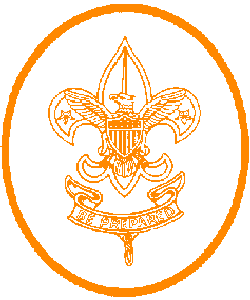
By this point the Scout should be comfortable with the Board of Review process. The Scout should be praised for his accomplishment in achieving 1st Class (particularly if he joined Boy Scouts less than a year ago). In achieving the rank of 1st Class, the Scout should feel an additional sense of responsibility to the troop and to his patrol. The 1st Class rank will produce additional opportunities for the Scout (Order of the Arrow, leadership, etc.). Merit badges will begin to play a role in future advancement to the Star and Life ranks. Encourage merit badge work if it has not already begun. The approximate time for this
Board of Review should be 20 minutes. Sample Questions:
Star Rank
With the Star rank, emphasis is placed upon service to others, merit badges, and leadership. Scout skills remain an important element for the Star Scout; however, the emphasis should be on teaching other Scouts these skills. Explore how the Star scout can assist with leading his patrol and troop. Attempt to understand how the Scouting philosophy is becoming part of the Scout's life. Often the Star rank is a place where Scouts "stall out". Encourage the Scout to remain active, and participate fully in his patrol and troop. If the Scout appears to be looking for additional opportunities, suggest leadership positions such as Den Chief or Troop Guide. The approximate time for this
Board of Review should be 20 minutes. Sample Questions:
Life Rank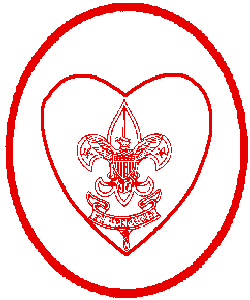
The Life rank is the final rank before Eagle. The Life Scout should be fully participating in the Troop, with emphasis being placed on leadership in the unit, as well as teaching skills and leadership to the younger Scouts. Merit Badge work should be a regular part of the Scout's career. Scouting values and concepts should be an integral part of the Scout's daily life. At this point, the Scout is starting to "give back to Scouting" through leadership, training of other Scouts, recruiting, keeping Scouts active in the program, etc. Explore suggestions for improving the program. The approximate time for this
Board of Review should be 20 - 30 minutes. Sample Questions:
Eagle Rank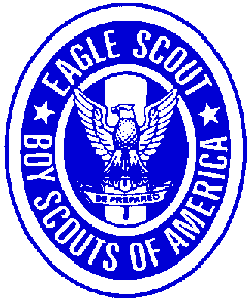
The Board of Review for the Eagle Rank is different from the other Boards of Review in which the Scout has participated. The members of the Board of Review are not all from his Troop Committee. Introductions are essential, and a few "break in" questions may be appropriate. At this point, the goal is to understand the Scout's full Scouting experience, and how others can have similar meaningful Scouting experiences. Scouting principles and goals should be central to the Scout's life; look for evidence of this. Although this is the final rank, this is not the end of the Scouting trail; "Once an Eagle, always an Eagle". Explore how this Eagle Scout will continue with Scouting activities, and continued service to his home, church, and community. The approximate time for this
Board of Review should be 30 - 50 minutes. Sample Questions:
Eagle Palms
Eagle Palms are awarded for continued leadership and skills development (merit badges) after the Eagle Rank has been earned. The purpose of this Board of Review is to ensure that the Eagle Scout remains active within the unit, contributes to the leadership of the unit, and assists with the growth of the other Scouts within the unit. The approximate time for this
Board of Review should be 15 minutes. Sample Questions:
This document was written Ray Klaus when he was District Advancement Chairman for Saddleback District, Orange County Council, BSA (1994-1995). It was designed to assist units in conducting Boards of Review. It is only a guide; units are encouraged to modify it as appropriate to their use. The procedures are typical for Saddleback District, Orange County Council, BSA in 1995. |
|
Send mail to [email protected] with
questions or comments about this web site.
|